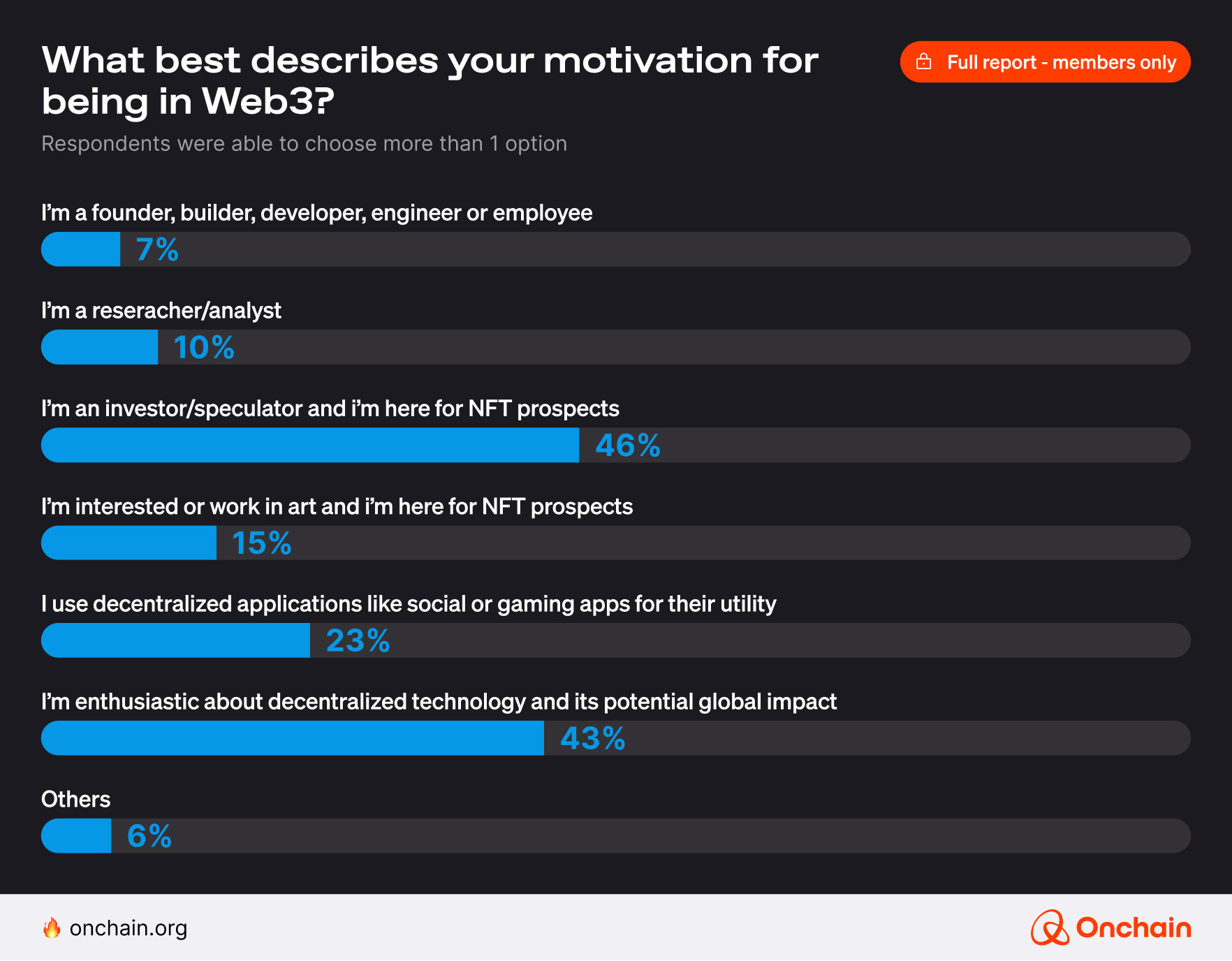Inside the Web3 Customer Mind – Design for Ego, not Wallets

What you’ll learn:
- What are the key psychological layers of onchain identity
- How identity, status, and tribe shape Web3 behavior
- How to address the common cognitive biases of your users
- Tools you can use to analyze your customers from A to Z
- A framework that will help you segment your users by their mindsets, not wallet balance
- How to transform insights about your customers into decisions regarding the purpose, UX, and design of your product
Financial gains are not the only motivation for people to enter Web3.
Yes, the majority starts there — and according to a recent “State of Onchain UX” report by Reown and Nansen, it remains the primary motivation for 46% of participants. But there’s something else that keeps them in this up-and-down space, with its never-ending stream of bold promises.

Some call it culture. Others stop at “cult.” And yet another group explains it by forcing meaning into something purely economic. Whatever that is, it leads from “owning digital assets” to a new kind of identity construction:
- People go beyond only buying tokens and start adopting beliefs.
- They don’t just interact with networks, but begin to play roles within tribes.
- They shape – and are shaped by the onchain experience.
This report helps you understand this subtle, sometimes uncanny psychology of the Web3 user. But rather than listing preferences or flat personas, it provides a set of insights, tools, and frameworks so you can explore the psychography of your Web3 customer, not just “a Web3 customer”.
That’s why I structured this piece as follows:
Part I explores the psychological foundations of Web3 participation, examining how people think, behave, and evolve once they “go onchain.”
Part II turns those insights into action, offering founders a practical toolkit to understand, segment, and tailor their offering to their users’ minds.
Part I: How Web3 Consumers Think
The onchain identity pyramid
First things first, Web3 users simply cannot be generalized. Even if they are all connected by the desire to “get rich quick,” the path to achieve this depends on various factors. These include their financial situation, tolerance for risk, cultural habits, and many other aspects that influence their non-economic decisions as well.
But if you zoom out a bit, a few psychological patterns emerge. And they are often “sticky” enough to shape how people behave, believe, and build onchain.
